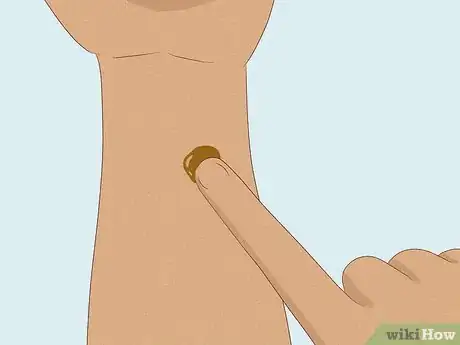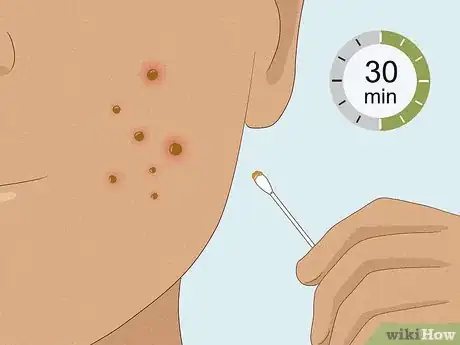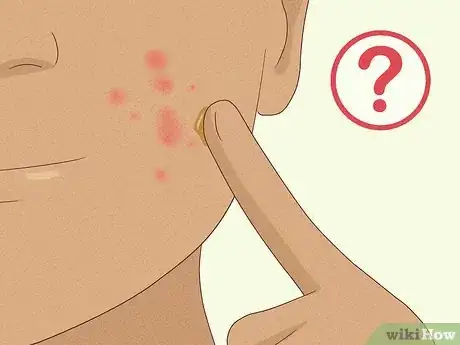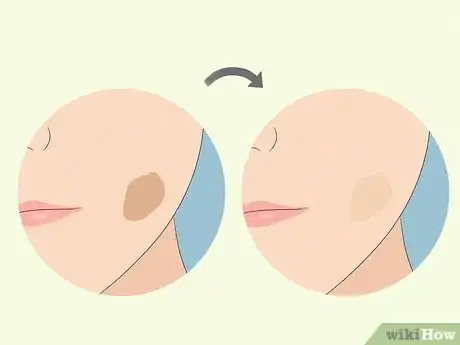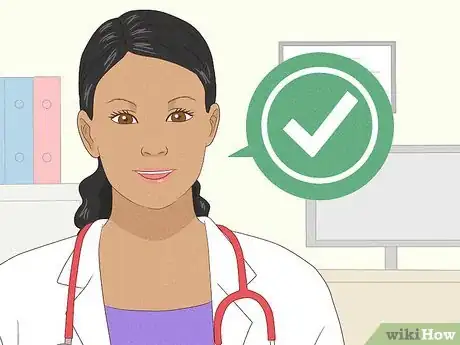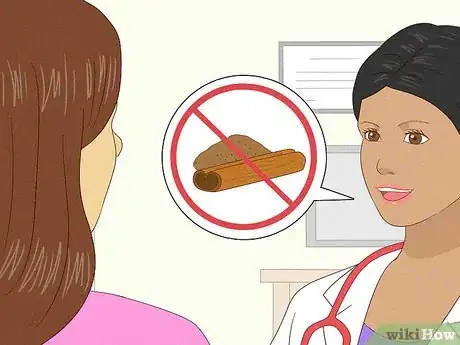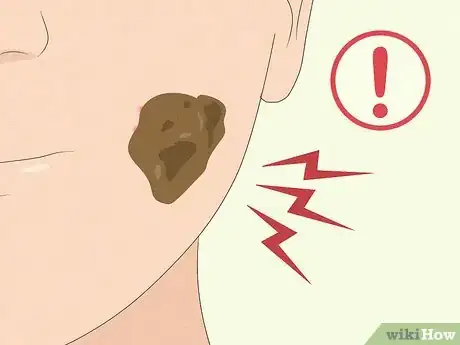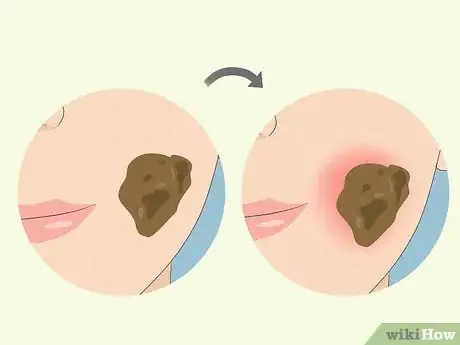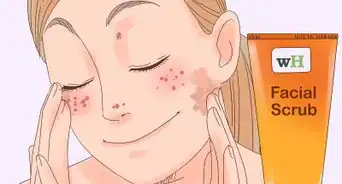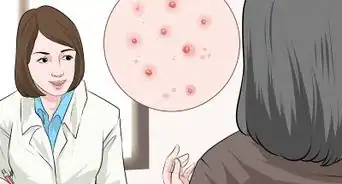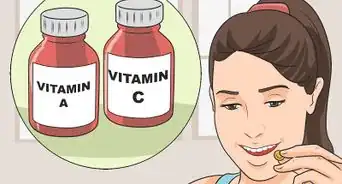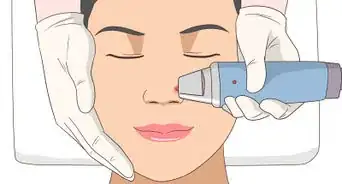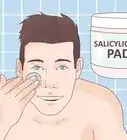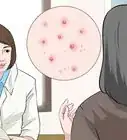This article was co-authored by Mohiba Tareen, MD and by wikiHow staff writer, Megaera Lorenz, PhD. Mohiba Tareen is a board certified Dermatologist and the founder of Tareen Dermatology located in Roseville, Maplewood and Faribault, Minnesota. Dr. Tareen completed medical school at the University of Michigan in Ann Arbor, where she was inducted into the prestigious Alpha Omega Alpha honor society. While a dermatology resident at Columbia University in New York City, she won the Conrad Stritzler award of the New York Dermatologic Society and was published in The New England Journal of Medicine. Dr. Tareen then completed a procedural fellowship which focused on dermatologic surgery, laser, and cosmetic dermatology.
There are 16 references cited in this article, which can be found at the bottom of the page.
This article has been viewed 9,563 times.
If you find over-the-counter acne treatments too harsh, or if you’re interested in natural alternatives, you might want to try a honey and cinnamon mask. To learn how to use this popular DIY remedy—and find out whether it’s really effective for treating acne—keep reading! We’ve answered some of your most frequently asked questions here.
Steps
How do you make a honey and cinnamon acne mask?
-
1Mix 2 tablespoons (30 mL) of honey with 1 tsp (2.6 g) of cinnamon. Combine your ingredients in a clean container, such as a small bowl.[1] If possible, use a medical-grade honey, such as Manuka or Revamil, since these contain higher concentrations of antimicrobial substances than other honeys.[2]
- You can buy medical-grade honey online or from a health food store.
- Cinnamon can be a skin irritant for some people; to be safe, always see your dermatologist before experimenting with these over-the-counter options.[3]
-
2Do a patch test before you apply the mask. Before using any skincare product—even one made with natural ingredients from your pantry—it’s a good idea to test it in a small area to see if it causes irritation.[4] To do a home patch test:[5]
- Put a couple drops of the mixture on the pad of a bandaid.
- Put the bandaid on the inside of your forearm and leave it there for 48 hours.
- After you remove the bandaid, check for signs of irritation, such as redness, itching, swelling, blisters, or a rash. Don’t use the mask if it irritates your skin!
Advertisement -
3Dab the mixture directly on acne blemishes. Use your clean fingertips or a cotton swab. Leave the mask in place for at least 30 minutes, then rinse it off with warm water.[6]
Can a honey and cinnamon mask reduce acne scars?
-
1Putting honey on a wound could help prevent scarring. Honey has moisturizing, anti-inflammatory, and antimicrobial properties. It can speed up and improve wound healing, which makes scarring less likely.[13] Unfortunately, though, there’s not a lot of evidence that it can minimize scars that are already there.
-
2Cinnamon may reduce the appearance of dark spots. There’s not much research on whether cinnamon is good for treating scars. However, one recent small study found that washing your face with a soap containing cinnamon essential oil may help even out your skin tone and brighten up dark spots associated with acne scarring.[14]
- It’s not clear whether putting ground cinnamon on your face would have the same effect.
- If you choose to put cinnamon essential oil on your skin, be extremely careful! Always dilute the oil in a carrier, such as vegetable oil, nut oil, or water. Don’t use more than 3 drops of essential oil per 1 teaspoon (4.9 mL) of your carrier.[15]
Do dermatologists recommend honey and cinnamon for acne?
-
1Some doctors recommend honey as a natural remedy for acne. Honey’s antimicrobial and wound healing properties are pretty well known. While most dermatologists probably wouldn’t suggest it as the best possible treatment for your acne, they’ll likely tell you that there’s no harm in trying it.[16]
- If you do use honey, dermatologists recommend sticking to medical-grade varieties. They tend to have stronger antimicrobial properties and are less likely to be contaminated with bacteria than your average grocery store honey.
-
2Your dermatologist will probably tell you to skip the cinnamon. Spices like cinnamon can irritate your skin. They might even cause blisters and burns. Dermatologists advise being cautious about putting anything so harsh on your delicate facial skin.[17]
-
3Ask about other natural acne remedies, like tea tree oil. If you’re keen on avoiding acne medications, your dermatologist might recommend some other natural alternatives. A few options you can try include:[18]
- A gel containing 5% tea tree oil. Some people find tea tree oil irritating, so use it with caution and combine it with a gentle moisturizer to minimize dryness.
- A cream containing 5% bovine cartilage. Your doctor may recommend applying this cream to your skin twice a day.
- Zinc supplements. Before trying zinc or any other supplement, talk to your doctor about any health concerns you may have and give them a list of other medicines or supplements you’re currently taking.
- Hansen CBS brewer’s yeast. If you take this strain of yeast orally, it may help clear up your acne.
Can putting honey and cinnamon on your face cause side effects?
-
1Honey is pretty safe, but watch for allergic reactions. For most people, the worst effect you might experience is a little bit of stinging when you put the honey on your skin. However, if you’re severely allergic to bee pollen or to specific components in the type of honey you’re using, you could have a more serious reaction. Stop using honey on your skin right away and get medical attention if you experience:[19]
- Severe skin irritation or rashes
- Wheezing or difficulty breathing
- Dizziness, weakness, or fainting
- Nausea and vomiting
- A racing or irregular heartbeat
- Excessive sweating
-
2You might experience redness and burning from the cinnamon. Cinnamon is pretty safe for most people, but it can be irritating to the skin. Some people experience itching, burning, and redness while using cinnamon-based acne medications.[20]
Expert Q&A
-
QuestionHow can I get rid of acne in a few days?
 Paul Friedman, MDPaul Friedman, MD, is a Board-Certified Dermatologist, and the Director and Founder of the Dermatology & Laser Surgery Center in Houston, Texas. He has over 25 years of experience and specializes in Mohs micrographic surgery, dermatologic laser surgery, and cosmetic dermatology. Dr. Friedman is the current President of the American Society for Laser Medicine & Surgery and was named by Newsweek Magazine as one of the Best Dermatologists in America for Laser Treatments. His awards include the Husk Prize for his research in dermatologic surgery and the Young Investigator's Writing Competition Award of the American Society for Dermatologic Surgery. Dr. Friedman completed his dermatology residency at the New York University School of Medicine and received his medical degree with the highest honors from the University of Tennessee Health Science Center, College of Medicine.
Paul Friedman, MDPaul Friedman, MD, is a Board-Certified Dermatologist, and the Director and Founder of the Dermatology & Laser Surgery Center in Houston, Texas. He has over 25 years of experience and specializes in Mohs micrographic surgery, dermatologic laser surgery, and cosmetic dermatology. Dr. Friedman is the current President of the American Society for Laser Medicine & Surgery and was named by Newsweek Magazine as one of the Best Dermatologists in America for Laser Treatments. His awards include the Husk Prize for his research in dermatologic surgery and the Young Investigator's Writing Competition Award of the American Society for Dermatologic Surgery. Dr. Friedman completed his dermatology residency at the New York University School of Medicine and received his medical degree with the highest honors from the University of Tennessee Health Science Center, College of Medicine.
Board Certified Dermatologist, American Board of Dermatology If you have an important engagement coming up, you can visit the dermatologist for an injection of an intralesional steroid, but it has to be very precise and it has to be of a low enough dose. That would be the main mechanism in terms of quickness of response. Other methods typically take a little time such as cleansers that contain salicylic acid or glycolic acid in the forms of typical cleansers that can be useful for opening up clogged pores and improving acne.
If you have an important engagement coming up, you can visit the dermatologist for an injection of an intralesional steroid, but it has to be very precise and it has to be of a low enough dose. That would be the main mechanism in terms of quickness of response. Other methods typically take a little time such as cleansers that contain salicylic acid or glycolic acid in the forms of typical cleansers that can be useful for opening up clogged pores and improving acne.
References
- ↑ https://skincare.lovetoknow.com/Home_Remedies_for_Acne
- ↑ https://www.sciencedirect.com/science/article/pii/S168411821500033X
- ↑ Mohiba Tareen, MD. FAAD Board Certified Dermatologist. Expert Interview. 26 March 2020.
- ↑ https://skincare.lovetoknow.com/Home_Remedies_for_Acne
- ↑ https://www.takingcharge.csh.umn.edu/are-essential-oils-safe
- ↑ https://skincare.lovetoknow.com/Home_Remedies_for_Acne
- ↑ https://www.insider.com/manuka-doctor-honey-review-2018-11
- ↑ https://skincare.lovetoknow.com/Home_Remedies_for_Acne
- ↑ https://www.ncbi.nlm.nih.gov/pmc/articles/PMC5489923/
- ↑ https://www.sciencedirect.com/science/article/pii/S168411821500033X
- ↑ https://www.ncbi.nlm.nih.gov/pmc/articles/PMC4746462/
- ↑ http://www.bmrat.org/index.php/BMRAT/article/view/515
- ↑ https://www.ncbi.nlm.nih.gov/pmc/articles/PMC3941901/
- ↑ https://www.researchgate.net/publication/332053508_Influence_of_the_Addition_of_the_Essential_Oil_of_Cinnamon_Cinnamomum_burmanii_in_Soap_Against_Skin_Care/fulltext/5c9cd4caa6fdccd4603f864d/Influence-of-the-Addition-of-the-Essential-Oil-of-Cinnamon-Cinnamomum-burmanii-in-Soap-Against-Skin-Care.pdf
- ↑ https://www.takingcharge.csh.umn.edu/how-do-i-choose-and-use-essential-oils
- ↑ https://www.today.com/style/top-10-home-remedies-acne-according-dermatologists-t145253
- ↑ https://www.cnn.com/2013/04/25/living/pantry-beauty/index.html
- ↑ https://newsnetwork.mayoclinic.org/discussion/home-remedies-all-about-acne/
- ↑ https://www.mayoclinic.org/drugs-supplements-honey/art-20363819
- ↑ http://www.bmrat.org/index.php/BMRAT/article/view/515
- ↑ https://www.today.com/style/top-10-home-remedies-acne-according-dermatologists-t145253
- ↑ https://skincare.lovetoknow.com/Home_Remedies_for_Acne
- ↑ https://www.ncbi.nlm.nih.gov/pmc/articles/PMC6330525/


